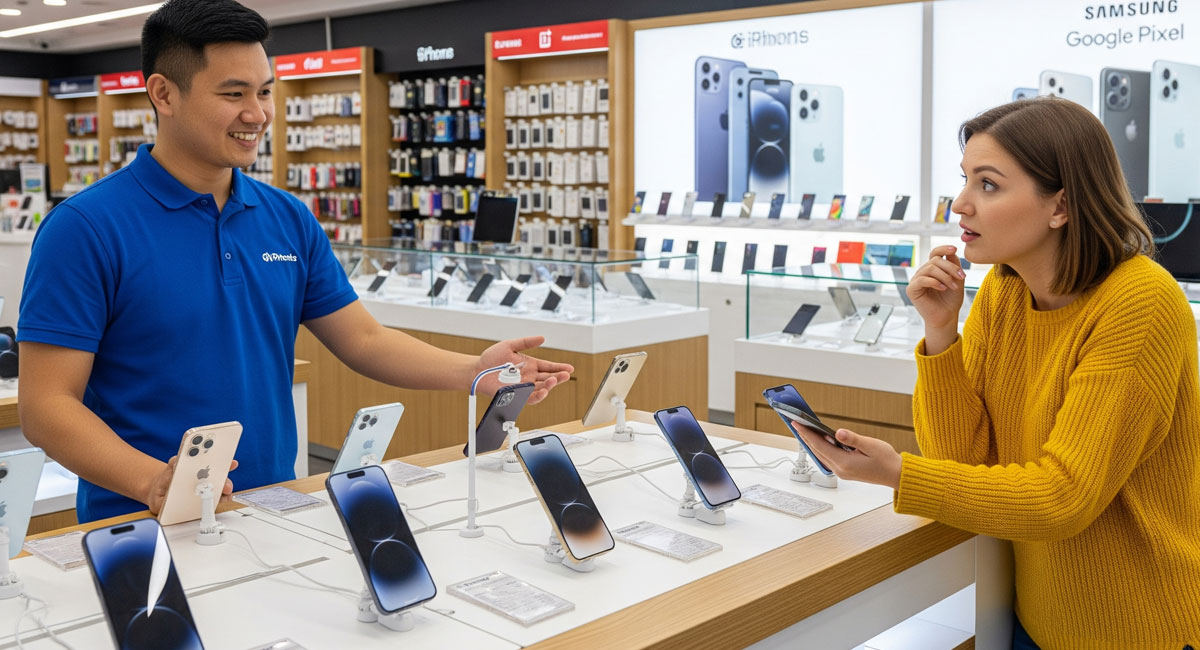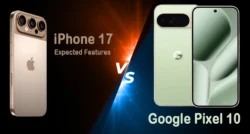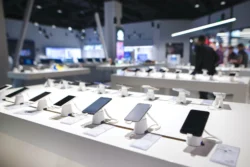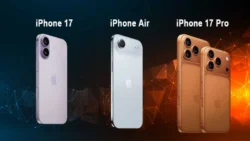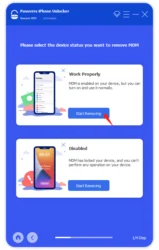In today’s technology-driven world, smartphones have become essential tools that we rely on for communication, work, entertainment, and daily tasks. One of the most important questions consumers ask when investing in a new device is: “How long can iPhone or Android phone last?” and “How many years iPhone or Android phone last before requiring replacement?”
This comprehensive analysis examines the average lifespan of iPhones versus Android devices from multiple critical perspectives: battery degradation over time, operating system update support, pressure from emerging technologies, and general physical damage resistance. Understanding these factors helps consumers make informed decisions about their smartphone investments and maximize their device longevity.
The smartphone industry has evolved rapidly, with manufacturers constantly pushing new features and improvements. However, this rapid innovation cycle raises questions about planned obsolescence and whether devices are designed to last or encourage frequent upgrades. By examining real-world data and user experiences, we can determine the true lifespan expectations for both iPhone and Android devices.
Table of Contents
- Battery Life Analysis: The Heart of Device Longevity
- Operating System Update Support: The Software Longevity Factor
- Upcoming Technologies Pressure: When Devices Become Obsolete
- General Damage and Physical Durability
- Average and Maximum Lifespan Expectations
- Comprehensive Tips to Increase Life of iPhone
- Comprehensive Tips to Increase Life of Android Phone
- Factors That Accelerate Device Aging
- Economic Considerations: Replacement vs. Maintenance
- Future Outlook: Extending Device Longevity
- Conclusion: Making the Smart Choice for Long-Term Value
Battery Life Analysis: The Heart of Device Longevity
iPhone Battery Performance Over Years
iPhone batteries typically maintain 80% of their original capacity after 500-800 complete charge cycles, which translates to approximately 2-3 years of regular use. Apple designs its batteries to retain up to 80% capacity at 1000 cycles under ideal conditions.
Average iPhone Battery Lifespan:
- Years 1-2: Battery maintains 85-100% capacity with minimal degradation
- Years 2-3: Battery capacity drops to 75-85%, noticeable decline in daily usage
- Years 3-4: Battery capacity falls to 65-75%, requiring daily charging becomes more frequent
- Years 4+: Battery capacity below 65%, may require multiple charges per day
Android Battery Performance Variations
Android devices show more variability in battery longevity due to different manufacturers, battery technologies, and optimization approaches. Premium Android devices generally perform similarly to iPhones, while budget devices may show faster degradation.
Average Android Battery Lifespan:
- Premium Android (Samsung Galaxy S, Google Pixel): Similar to iPhone performance, 2-3 years before significant degradation
- Mid-range Android: 18-24 months before noticeable battery decline
- Budget Android: 12-18 months before substantial battery capacity loss
Battery Technology Differences:
- iPhone: Uses custom-designed lithium-ion batteries optimized for iOS
- Android: Various battery technologies depending on manufacturer, from standard lithium-ion to fast-charging optimized batteries
Operating System Update Support: The Software Longevity Factor
iPhone OS Update Longevity
Apple’s iOS update policy significantly extends device lifespan by providing security patches and feature updates for older devices.
iPhone OS Update Timeline:
- Average support duration: 5-6 years from release date
- iOS 17 (2023): Supports devices back to iPhone XS (2018)
- Security updates: Often extend 1-2 years beyond major iOS updates
How Many Years iPhone Last with OS Updates:
- Guaranteed support: 5-6 years minimum
- Extended security: Up to 7-8 years total
- Feature parity: 3-4 years for latest features
Android OS Update Challenges
Android’s fragmented ecosystem creates varying update experiences depending on manufacturer and device tier.
Android Update Support by Manufacturer:
- Google Pixel: 3-5 years OS updates, 5-7 years security updates
- Samsung Galaxy S/Note: 4-5 years OS updates, 5-6 years security updates
- OnePlus: 3-4 years OS updates, 4-5 years security updates
- Budget manufacturers: 1-2 years OS updates, 2-3 years security updates
How Many Years Android Phone Last with Updates:
- Premium devices: 4-5 years with regular updates
- Mid-range devices: 2-3 years with consistent updates
- Budget devices: 1-2 years with minimal update support
Upcoming Technologies Pressure: When Devices Become Obsolete
Technology Evolution Impact on Device Relevance
Both iPhone and Android devices face pressure from emerging technologies that can make older devices feel outdated even when they’re functionally operational.
Current Technology Pressures:
- 5G connectivity: Older devices limited to 4G networks
- AI/Machine Learning: Newer devices with dedicated AI chips
- Camera technology: Advanced computational photography
- Display technology: High refresh rates, better color accuracy
- Charging technology: Faster wireless and wired charging
iPhone Technology Adoption Timeline:
- 5G: iPhone 12 (2020) and newer
- MagSafe: iPhone 12 (2020) and newer
- Dynamic Island: iPhone 14 Pro (2022) and newer
- USB-C: iPhone 15 (2023) and newer
Android Technology Adoption:
- 5G: Available across various price points since 2019
- High refresh displays: Standard in mid-range devices since 2020
- Fast charging: Widely available across price ranges
- AI features: Varies by manufacturer and device tier
General Damage and Physical Durability
iPhone Physical Durability
iPhones generally demonstrate strong build quality with premium materials and design.
Common iPhone Damage Patterns:
- Screen damage: Occurs in 20-30% of devices within 2 years
- Water damage: Improved significantly with IP ratings since iPhone 7
- Button/port failures: Relatively rare, usually after 3-4 years
- Camera system issues: Occasional problems with moving parts (optical zoom)
iPhone Durability Ratings:
- Average physical lifespan: 4-5 years with normal use
- Maximum lifespan with care: 6-8 years
- Most vulnerable components: Display, charging port, battery
Android Physical Durability Variations
Android device durability varies significantly based on manufacturer, price point, and build quality.
Premium Android Durability:
- Samsung Galaxy S series: Comparable to iPhone durability
- Google Pixel: Good build quality, occasional hardware issues
- OnePlus: Generally solid build quality
Mid-range and Budget Android Issues:
- Lower quality materials: Plastic construction more prone to damage
- Inconsistent water resistance: Many lack IP ratings
- Component failures: Higher failure rates for buttons, ports, speakers
Average and Maximum Lifespan Expectations
How Long Can iPhone Last: Realistic Expectations
Average iPhone Lifespan:
- Typical user: 3-4 years before feeling need to upgrade
- Heavy users: 2-3 years due to battery degradation and wear
- Light users: 4-5 years with adequate performance
Maximum iPhone Lifespan (Well-Maintained):
- With battery replacement: 6-8 years functional lifespan
- Optimal care conditions: Up to 10 years for basic functions
- Limiting factors: OS update support ends, app compatibility issues
How Long Can Android Phone Last: Variable Expectations
Average Android Phone Lifespan:
- Premium devices: 3-4 years typical usage
- Mid-range devices: 2-3 years before significant slowdown
- Budget devices: 1.5-2.5 years average lifespan
Maximum Android Phone Lifespan (Well-Maintained):
- Premium devices with care: 5-7 years functional use
- Mid-range with maintenance: 3-5 years extended use
- Budget devices optimized: 2-4 years maximum realistic lifespan
Comprehensive Tips to Increase Life of iPhone
Battery Optimization Strategies:
- Enable Optimized Battery Charging: Allows iOS to learn your charging routine
- Avoid extreme temperatures: Keep device between 32°-95°F (0°-35°C)
- Use original or certified chargers: Prevents voltage irregularities
- Maintain 20-80% charge levels: Avoid complete discharge and overcharging
- Enable Low Power Mode: When battery reaches 20% or during extended use periods
Software Maintenance:
- Regular iOS updates: Install security patches and performance improvements
- App management: Delete unused apps and clear cache regularly
- Storage optimization: Keep 10-15% free storage space
- Background app refresh: Limit to essential apps only
- Reset network settings: Annually to resolve connectivity issues
Physical Protection:
- Quality case protection: Invest in shock-absorbing cases
- Screen protection: Use tempered glass screen protectors
- Water exposure prevention: Despite IP ratings, minimize liquid contact
- Regular cleaning: Use appropriate cleaning materials for ports and speakers
- Temperature management: Avoid leaving in hot cars or direct sunlight
Usage Optimization:
- Restart regularly: Weekly restarts improve performance
- Monitor battery health: Check Settings > Battery > Battery Health
- Manage notifications: Reduce unnecessary background activity
- Use Dark Mode: Can extend battery life on OLED displays
- Optimize display settings: Adjust brightness and auto-lock timing
Comprehensive Tips to Increase Life of Android Phone
Battery Longevity Strategies:
- Adaptive charging features: Enable manufacturer-specific battery optimization
- Charging habits: Use 20-80% rule, avoid overnight charging when possible
- Power management: Utilize built-in power saving modes
- Temperature control: Keep device cool during charging and intensive use
- Wireless charging moderation: Wired charging generally better for battery health
Software Optimization:
- Manufacturer updates: Install system updates promptly when available
- Bloatware removal: Disable or uninstall unnecessary pre-installed apps
- Custom launcher consideration: Lightweight launchers can improve performance
- Cache management: Regular clearing of app cache and system cache
- Developer options: Enable animation reduction for smoother performance
Hardware Protection:
- Comprehensive case protection: Full-body protection with raised edges
- Screen and camera protection: Tempered glass for screen and camera lenses
- Port protection: Keep charging ports clean and dry
- Button care: Avoid excessive force on physical buttons
- Speaker protection: Regular cleaning of speaker grilles
Performance Maintenance:
- Storage management: Maintain 15-20% free storage space
- RAM optimization: Use built-in memory cleaners sparingly
- App updates: Keep apps updated for security and performance
- Factory reset consideration: Annual factory reset can restore performance
- Professional servicing: Annual check-up for premium devices
Factors That Accelerate Device Aging
Environmental Factors:
- Extreme temperatures: Both hot and cold conditions accelerate aging
- Humidity exposure: Can cause internal corrosion
- Physical impacts: Drops and pressure affect internal components
- Dust and debris: Can clog ports and affect cooling
Usage Patterns That Reduce Lifespan:
- Heavy gaming: Generates heat and stresses components
- Constant charging: Keeping device plugged in continuously
- Maximum brightness: Strains display and battery
- Multitasking overload: Excessive background processes
Economic Considerations: Replacement vs. Maintenance
Cost-Benefit Analysis of Device Longevity
iPhone Maintenance Costs:
- Battery replacement: $69-$89 (official Apple service)
- Screen replacement: $279-$379 depending on model
- Case and protection: $50-$150 for quality protection
- Total maintenance over 5 years: $200-$400
Android Maintenance Costs:
- Battery replacement: $50-$150 (varies by manufacturer)
- Screen replacement: $100-$300 depending on device
- Protection accessories: $30-$100 for adequate protection
- Total maintenance over 4 years: $150-$350
Replacement Decision Factors:
- Performance degradation: When daily tasks become frustratingly slow
- Security concerns: When security updates are no longer available
- Feature requirements: When new features become essential for work or lifestyle
- Repair costs: When repair costs exceed 50% of replacement cost
Future Outlook: Extending Device Longevity
Emerging Trends That May Extend Lifespan:
- Improved battery technology: Solid-state batteries with longer lifespans
- Modular designs: Easier component replacement and upgrades
- Enhanced software optimization: AI-driven performance management
- Right to repair legislation: Easier access to parts and repair services
Manufacturer Commitments:
- Apple: Increasing focus on device longevity and repairability
- Samsung: Extended update commitments for flagship devices
- Google: Longer Pixel support periods and sustainable design
- Industry trend: Moving toward longer device support cycles
Conclusion: Making the Smart Choice for Long-Term Value
The question of “how long can iPhone or Android phone last” depends on multiple factors including usage patterns, maintenance habits, and individual requirements. iPhones generally offer longer software support and consistent performance over time, making them excellent choices for users who want maximum longevity. Premium Android devices can match iPhone longevity but require more careful selection of manufacturer and model.
For users asking “how many years iPhone or Android phone last,” the realistic answer is 3-4 years for average users, with potential extension to 5-8 years through proper maintenance and battery replacement. The key to maximizing smartphone lifespan lies in proactive care: protecting the device physically, managing battery health, maintaining software updates, and making strategic decisions about when to repair versus replace.
Ultimately, both iPhone and Android devices can provide excellent longevity when properly maintained. The choice between them should consider not just initial purchase price, but total cost of ownership, including maintenance, accessories, and the value derived from extended use. By following the comprehensive tips outlined in this analysis, users can significantly extend their device lifespan and maximize their smartphone investment, regardless of their platform choice.
